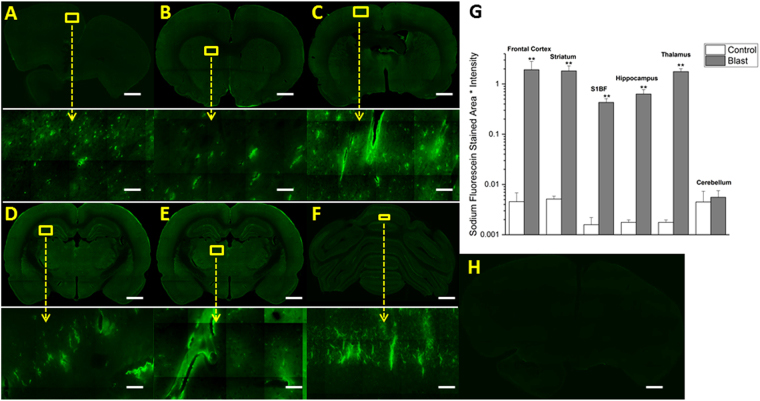Despite the recent increase in studies of blast-induced traumatic brain injury (bTBI), there remains a limited understanding of how blast overpressure interacts with the brain and causes injury. This knowledge gap continues to hamper the development of preventative measures, diagnostic criteria, and therapeutic strategies for bTBI.
The blood-brain barrier (BBB) is a selectively permeable membrane that separates the brain from the circulatory system. Damage to the BBB is one of many potential bTBI injury mechanisms and has been the focus of several recent clinical and experimental investigations.
In a June 2018 article in Scientific Reports, researchers at the New Jersey Institute of Technology (NJIT) report on the temporal and spatial changes in BBB permeability as a function of blast overpressure in bTBI.
In the study, NJIT researchers exposed rats to a range of shock waves in a field-validated shock tube and assayed BBB permeability by measuring extravasation of Evans blue (which binds to albumin, a 66 kDa protein abundant in blood) and sodium fluorescein (a 376 Da molecule) in the frontal cortex, striatum, somatosensory barrel-field cortex, hippocampus, thalamus, and cerebellum, as well as performing enzyme-linked immunosorbent assay (ELISA) for several protein biomarkers of BBB integrity.
Results of the study confirm that primary blast (i.e., overpressure alone) induces disruption of the BBB. This disruption, as assayed by BBB permeability, first occurs in response to mild blast overpressure (70 kPa) and increases as a function of blast overpressure. Following moderate blast overpressure (180 kPa), different brain regions expressed different degrees of BBB permeability, with the most robust changes occurring in the frontal cortex, striatum, and thalamus (See Figure below). In addition, BBB permeability varied as a function of time. Following moderate blast overpressure, significant BBB permeability was detected as soon as 15 minutes, peaked at 4 hours, and returned to control levels at or before 24 hours. This BBB compromise timeline was corroborated by significantly reduced levels of the tight junction proteins, occludin and claudin-5. Moreover, blast overpressure disruption of the BBB caused significant translocation of astrocytic marker s100-β and monocyte marker CCL2 (C-C motif chemokine ligand 2) into the blood and brain, respectively.
Overall, the NJIT study supports the hypothesis that direct biomechanical loading of the primary blast wave is sufficient to induce BBB disruption. The study addresses an important knowledge gap and lays the groundwork for future studies aimed at connecting BBB permeability with the pathological mechanisms of bTBI, and possible protection and intervention strategies.

Kuriakose, Matthew, Kakulavarapu V. Rama Rao, Daniel Younger, and Namas Chandra. Temporal and Spatial Effects of Blast Overpressure on Blood-Brain Barrier Permeability in Traumatic Brain Injury. Scientific reports 8, no. 1 (2018): 8681.
Your 15 minute session will timeout in approximately 10 minutes.
If you're in the middle of entering information, please close this warning and save your progress (if possible) or finish up your task.
If your session fully times out, you will lose any un-saved work.
Your current Blast Injury Research Program session has expired.
Your next click will take you away from the private area, and you will lose any work you have in-progress.
Please enter your email address, and try again.